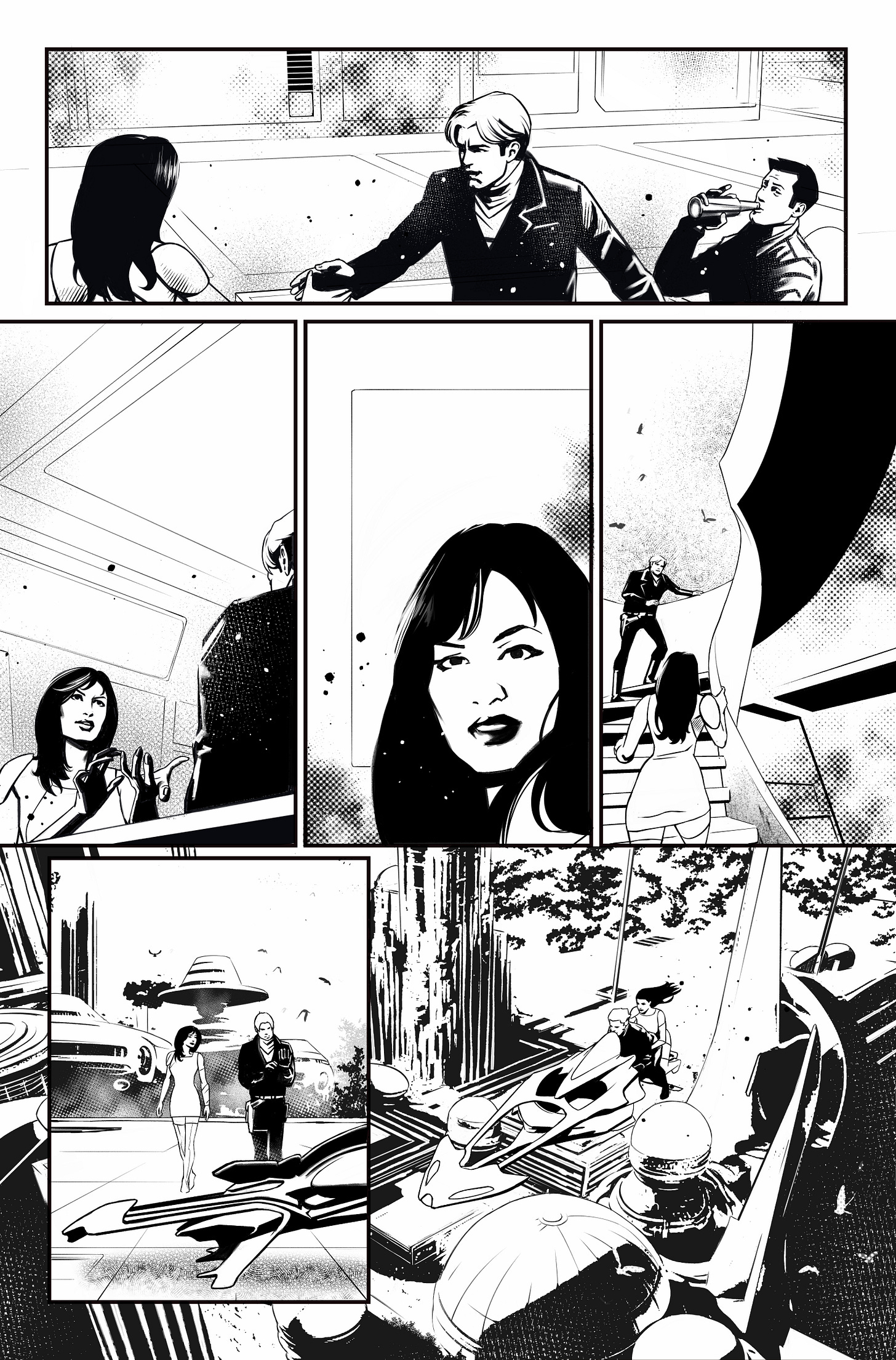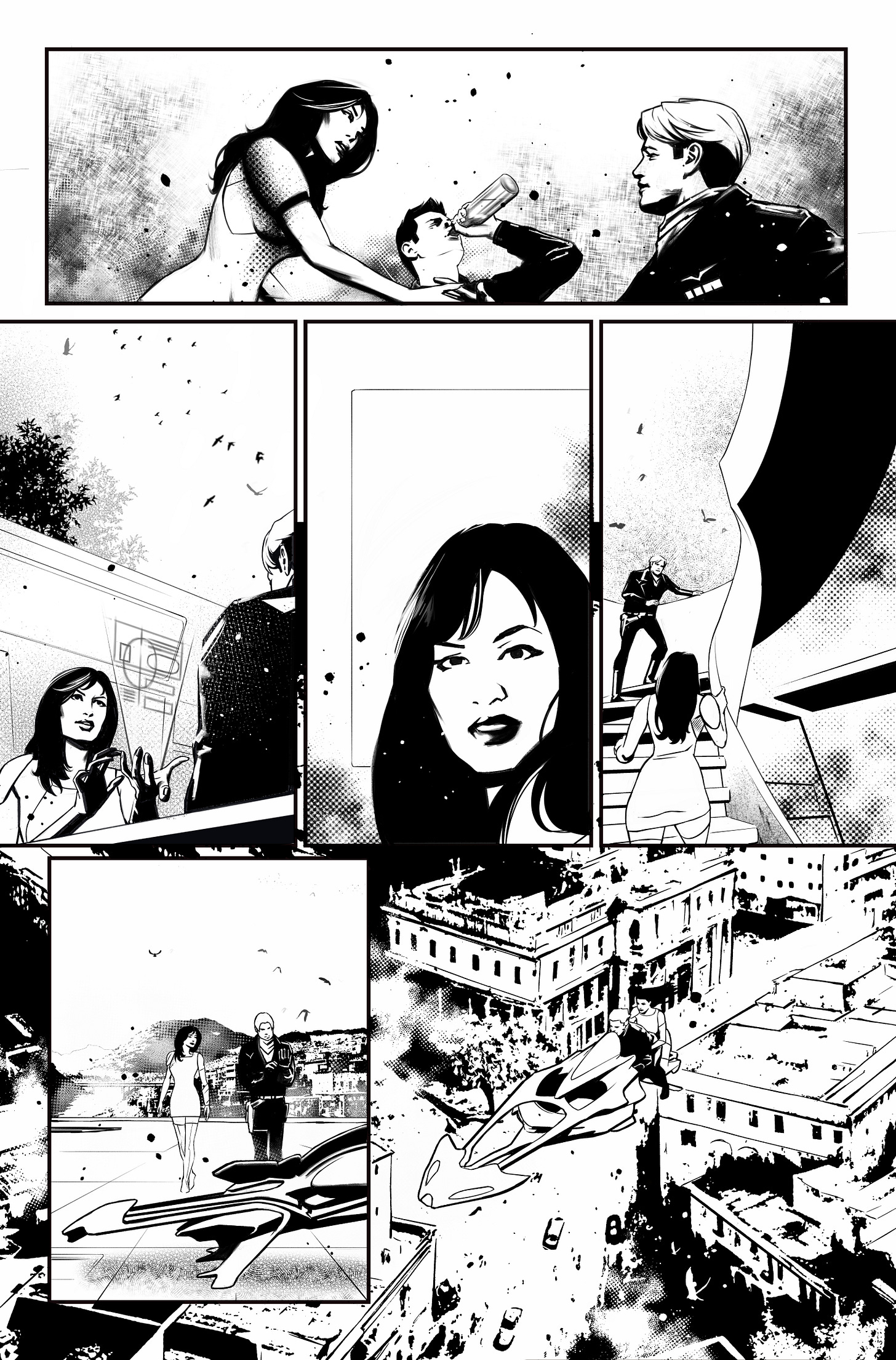All the episodes in this dark comedy are here in Iron Age Unfolding, so if you want to catch up on my misadventures, mishaps, misfortunes, false starts, setbacks, etc., you’ve got some reading to do.
I was becoming more convinced that I was going to have to illustrate these graphic novels myself. Trouble was, I had quit drawing long ago. Talents wither and die when you don’t use them. Also, I no longer have the steady hand I used to.
So, first of all, I had to re-learn how to draw. But I had self-taught the first time, when I was a boy, and had developed some bad habits. For instance: never starting with sketches of basic shapes, then building up to the final product. I did single line drawings right from the beginning. I erased a lot. I was better at drawing than anybody I knew as a boy, and was pretty good there at the end. But my finished products were hit-or-miss. Starting with the basic shapes in a sketch could have helped me, because now and then I would foul up the symmetry or proportions of a person or object, and just never got it right after copious erasing and re-drawing.
I decided to start the re-learning process by storyboarding one of my scripts. What I discovered was that the raw talent and skills, had vanished. But the bad habits had not. Also, it was extremely time-consuming. When I was a boy, time seemed to stand still. I had too much time and not much to do, so spending hours drawing was not a big deal. But now, I have way too much to do and not nearly enough time for half of it. Achieving competence was going to take a lot of time, even before I got around to drawing the first panel.
But I didn’t have to do it with whatever school pencil was laying around and whatever paper I could find. There were tools that could save time, help me be more accurate and efficient, and just make the process easier—like Clip Studio Paint, and Blender. But now, added to the time needed to re-learn illustration, and to do the illustrating, I had to spend the time to learn the new software: powerful software, with bazillions of tools, options, and variables.
While I was doing that, I was ever-conscious of the clock ticking. Would I even be able to get started on one of these projects before the world as I knew it ended? American citizens were being arrested for sharing memes, imprisoned as terrorists or insurrectionists, without due process, for exercising First Amendment rights. The economy is getting shittier every day and the incompetence of those in power growing exponentially as our civilization swirls down the toilet hole. There were already harbingers of major problems with the power grid—and those problems are not being fixed. The same goose-stepping leftards who call people like me dangerous are clamoring for a civil (or racial) war. Some of them, anyway. And, through the fake & gay Biden Administration, GloboHomo is provoking Russia and trying to start World War III. Assuming I could survive all this and get at least one graphic novel completed and ready for sale, would anyone have any disposable income to buy it by then? How much would I have to charge for a copy to cover my expenses under Bidenflation—$400 a copy for a 102 page graphic novel?
So, even while spending precious time preparing to do my own illustration, I didn’t completely abandon hope for finding an illustrator who was already ready to go. However, I was not gonna search Fivver for one, anymore. Friends and family tried to hook me up with artists they knew or came across. All those deals fell through for one reason or another—and all of them burned up my precious time. But I found a way to answer classifieds on Faceborg without needing to reactivate my Faceborg account (which I now wish I had completely deleted back in 2013 or whenever I quit).
Through those FB classifieds, I found a few talented artists. All expressed interest. I wound up making a deal with a guy whose page rate for black & white was higher than what another guy charged for finished color, because he was enthusiastic about sci-fi and therefore, sez I, he won’t flake on me.
His work looked really good. It wasn’t that elegant adventure strip style of yesteryear I envisioned, but most readers would probably like it better anyway. We came to an agreement.
There was a language gap which complicated getting ideas across, plus, he was kind of stubborn. Some stuff I was willing to compromise on. He wanted to put robots in certain scenes where I had none. Okay, fine. He wanted to draw Kazz as overweight and kind of dumb-looking. I didn’t like that, but was willing to accept it. But, for instance, even though the setting is “a galaxy far, far away” where technology is advanced well beyond ours in many fields, the story starts out in a relatively primitive village with old buildings that have some high-tech upgrades, where the streets are shared by both hovercraft and wagons pulled by animals. Well, he didn’t want to draw old buildings. He wanted to get right to the futuristic landscapes, even though the story hadn’t taken the characters there, yet.

I tried multiple ways of communicating this to him, and explaining that the futuristic buildings were in the story, just not at the beginning. He just would not do it. I patiently explained it in many ways, including translations into his own language in case Google Translate was throwing him off. One of these I tested by having it checked by somebody whose first language was the same as his. Of course, all this was burning up time. I believe he understood fully what I wanted—he just wanted to draw it his way. But this was something I was not willing to compromise on.
This was giving me deja vu. If he was gonna refuse to draw what I asked for, then I was wasting time and money. Per our agreement, I paid him up-front for pages. I had already paid him for the page in which this conflict came to a head. But I was not gonna pay him for the next page unless and until he gave me what I wanted. So I mulled over my situation and options, but didn’t send the payment for the next page.
This artist (if he was honest with me) was in a bad situation and needed money desperately. More on that later, perhaps. (Ironically, he probably lived in a place that looked much like what I asked him to draw.) After I quit explaining the visual needs of the story in new ways, it took just a couple days before he wrote me back with a message basically saying, “I’m so sorry! I’ll draw whatever you want! Then will you pay me for the next page?”
So, he redrew the background in a panel. Well, he didn’t draw it, I’m guessing. He took a photograph and used software to convert it to what looks kinda’ like a black & white line drawing. It was close enough to what the story needed, so whatever. I tweaked the image myself in CSP so it would look less like a conversion from a photo, and we moved forward—me paying in advance again for the next page.

There’s no denying his talent. When he wanted to, he could draw me what I asked for and make it look great. Sometimes he got lazy or rushed and the faces didn’t look right, but normally he drew them more realistic than what you see in most American comics and all Manga. And they were usually consistently drawn from panel to panel. I could deal with an occasional sub-par panel, by his standards. Sometimes he would “cheat” by just making the panel a silhouette image, or not having much of a background at all. I understand why artists do that and think it’s fine—as long as it’s not every panel. In fact, I script these books in a way that I design to be easier for artists. I minimize panels with more than two characters, for example. And even when there’s just two characters, I’ll usually ask for an over-the-shoulder angle instead of a profile, because drawing the back of a character’s head is much easier and faster than drawing another face. I’ll have a character’s dialog balloon point to the respective character in an adjacent panel rather than requiring the illustrator to draw them again in a new panel. And so on. I’m not an artist anymore, and never was as good as a lot of them working in the industry today, but I do empathize with the difficulties they face and want to make the job easier for them when I can.
We drove on. I thought the creation part of this project was covered well enough that I could spend some time and effort on the worst, most difficult, dreariest, yet most important aspect of the book biz: marketing. I’ve written bestselling prose novels, but I’m new to comics, and unknown. I have to build an audience almost from scratch for these graphic novels. And for a non-woketard independent author, the deck is severely stacked against you on every platform you can potentially sell your work.
One idea I came up with was to share the story on Arkhaven. For the most part, the readers who go to Arkhaven are fantastic. I had shared a few short stories there and, despite my own mistakes and some technical glitches beyond my control, the readers were appreciative, supportive, and encouraging. Other creators, after having posted their stories there, have gone on to crowdfund those stories as print editions, and enjoyed successful campaigns. So I started modifying panels for a vertical scroll with Arkhaven’s dimension requirements, and began posting them.
Looks like this particular part of the graphic novel saga will require more than one post, so, To Be Continued…




Wow, that sounds enormously frustrating. I would have blown my top. It sort of reminds me of the problem at my first job out of college where they had offshored a lot of work to a code farm in India and ended up bringing it back in less than two years because of all the delays caused by communication breakdowns and recalcitrance.
It seems like the biggest hurdle is finding artists willing to follow instructions